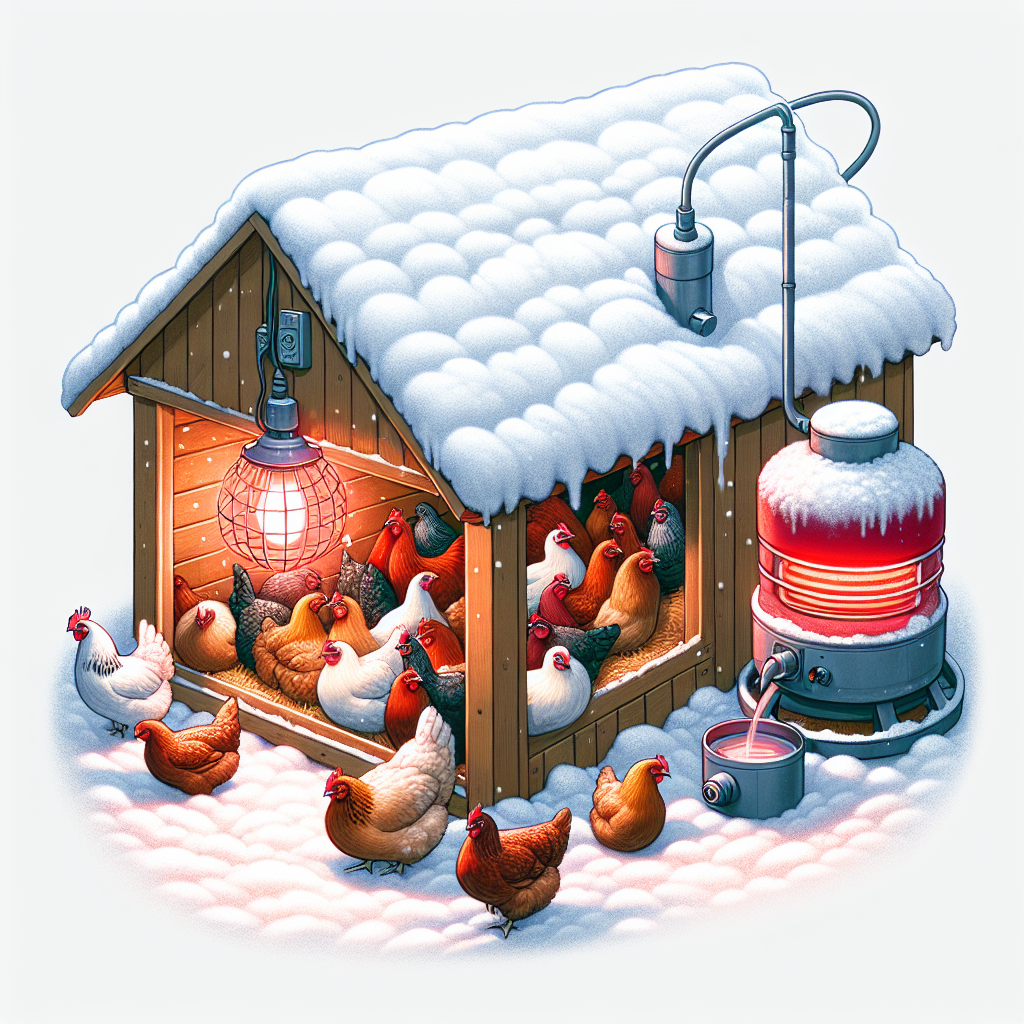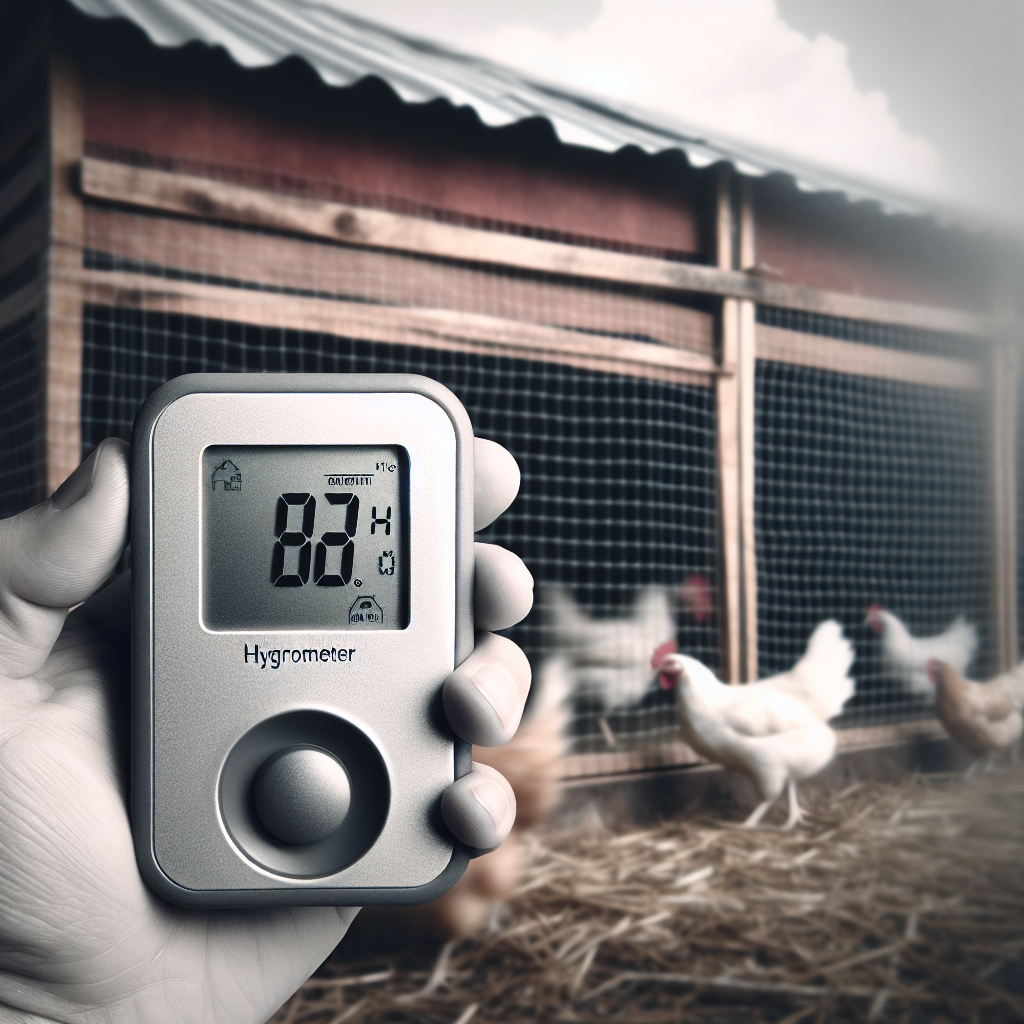During shorter winter days, it is important to ensure that your chickens receive sufficient light for their well-being. The reduced amount of daylight can have an impact on their health and egg production. In this article, we will explore some practical and effective ways to provide artificial light to your chickens, allowing them to thrive even during the darker months of the year. By implementing these strategies, you can ensure that your feathered friends are happy, healthy, and continue to provide you with fresh eggs throughout the winter season.
Importance of Light for Chickens
Light plays a crucial role in the health and well-being of chickens. Providing the right amount and type of light can directly impact their productivity, behavior, and overall development. In this article, we will explore the significance of light for chickens and discuss various factors to consider when ensuring they receive adequate lighting. We will also delve into creative solutions and best practices for positioning light sources, as well as monitoring and adjusting light levels to meet the specific needs of different chicken breeds.
Natural Light vs Artificial Light
The role of natural light
Natural light is an essential aspect of a chicken’s life, as it closely mimics the lighting conditions they would experience in their natural habitat. Exposure to natural light helps regulate their internal body clock, known as the circadian rhythm. This, in turn, influences their sleep patterns, feeding behavior, and overall biological functions. Natural light also contributes to the production of Vitamin D, which is essential for bone health and the absorption of calcium.
The use of artificial light during winter
During the winter months, when daylight hours are shorter and natural light is limited, artificial lighting becomes crucial for maintaining optimal chicken health and production. Artificial lighting can help extend the day length, ensuring that chickens receive the recommended amount of light they need for efficient growth, immune system functioning, and egg production. By supplementing with artificial light, we can provide a constant light source that helps regulate their circadian rhythm and keeps them active.
Factors to Consider
Seasonal changes
One key factor to consider when ensuring chickens receive enough light is the seasonal changes in daylight hours. As winter approaches, the days become shorter, which means less natural light exposure for chickens. As a result, their egg production may decline, and they may become less active. By understanding the seasonal changes and compensating for the lack of natural light, we can help maintain their productivity and overall well-being.
Latitude and geographical location
Another important factor to consider is the latitude and geographical location where your chickens are housed. The amount of daylight your chickens receive can vary depending on your location in the world. For example, chickens in regions near the equator may receive more consistent and longer hours of daylight throughout the year compared to those in higher latitudes. Understanding your geographical location and the corresponding daylight patterns can guide you in providing appropriate artificial lighting to support your chickens’ needs.
Recommended Light Duration
Understanding the needs of different chicken breeds
Different chicken breeds have varying light requirements, depending on their intended purpose. For layers, who are primarily raised for egg production, it is essential to provide a consistent and sufficient amount of light to ensure optimal egg production. Broilers, on the other hand, who are bred for meat, may have slightly different light requirements. Understanding the specific needs of your chicken breeds will help you determine the ideal light duration to meet their individual requirements.
Ideal light duration for layers
For laying hens, it is generally recommended to provide around 14 to 16 hours of light per day. This extended light duration helps stimulate their reproductive system, leading to increased egg production. To ensure a consistent light schedule, it is advisable to provide supplemental lighting in the early morning or late afternoon to extend the natural daylight hours during winter. This will help maintain a constant light cycle and stimulate egg-laying.
Ideal light duration for broilers
Broilers, being primarily raised for meat production, do not require as much light as layers. Providing around 8 to 10 hours of light per day is usually sufficient for their growth and well-being. However, it is still important to maintain a consistent light schedule to avoid disrupting their feeding patterns and overall development.
Creative Solutions to Ensure Sufficient Light
Using reflective surfaces
One creative solution to maximize light availability is to utilize reflective surfaces in your chicken coop. By strategically placing reflective materials such as mirrors or aluminum sheets, you can redirect and multiply the amount of natural and artificial light available to the chickens. This will help create a brighter and more evenly illuminated environment, ensuring that all areas of the coop receive sufficient light.
Utilizing windows and skylights
Utilizing windows and skylights in your chicken coop is another effective way to enhance natural light exposure for your chickens. Positioning coop windows strategically to allow maximum sunlight to enter can significantly increase the overall light levels in the coop. Similarly, installing skylights provides an additional source of natural light, especially during shorter winter days. These features not only contribute to the chickens’ well-being but also create a more visually appealing and comfortable environment.
Installing light fixtures
Installing additional light fixtures in your chicken coop can help address any deficiencies in natural light. By strategically placing artificial light sources, such as LED bulbs, near areas where chickens spend most of their time, you can ensure they receive consistent and appropriate lighting. Light fixtures should be energy-efficient, durable, and have the right brightness levels to closely replicate natural daylight.
Utilizing Light Timers
Light timers are a convenient tool that can help automate the provision of light to your chickens. These timers can be programmed to turn on and off at specific times of the day, ensuring a consistent light schedule regardless of any external factors. Light timers eliminate the need for manual switching and provide a reliable and efficient solution for maintaining optimal lighting conditions for your flock.
Choosing the Right Light Bulbs
Types of light bulbs for chickens
When choosing light bulbs for your chicken coop, it is important to consider their specific lighting needs. LED bulbs are highly recommended for chicken coops due to their energy efficiency, long lifespan, and ability to emit a broad spectrum of light. LED bulbs provide a balanced color temperature that closely resembles natural daylight, benefiting the overall health and productivity of your chickens. Avoid using incandescent bulbs, as they are not energy-efficient and can generate excessive heat, which may be detrimental to the chickens’ well-being.
Recommended wattage and brightness levels
The recommended wattage and brightness levels of the light bulbs will depend on the size of your coop and the specific needs of your chicken breeds. As a general guideline, aim for a minimum of 10 to 15 watts per square foot of coop space. Additionally, consider providing enough brightness to ensure even distribution of light throughout the coop, without causing any glare or discomfort for the chickens. Consult with lighting experts or poultry specialists to determine the ideal wattage and brightness levels for your specific setup.
Positioning Light Sources
The importance of light positioning
Proper positioning of light sources is crucial to ensure chickens receive sufficient light without causing any negative impacts. Light fixtures should be positioned at an appropriate height to evenly distribute light throughout the coop. Consider placing them closer to the ceiling or at an angle to prevent direct light exposure on the chickens, which can cause stress or discomfort. Additionally, ensure that the light sources are not obstructed by any objects or coop structures, as this can reduce the overall effectiveness of the lighting.
Avoiding direct light on chickens’ eyes
Direct exposure to light can be uncomfortable for chickens, particularly if it directly hits their eyes. Avoid positioning light sources in a way that shines directly into their eyes, as this can cause irritation or distress. By angling the light fixtures or positioning them higher up, you can create an indirect lighting effect that provides sufficient brightness without causing any discomfort to the chickens.
Monitoring and Adjusting Light Levels
Observing chicken behavior
Monitoring your chickens’ behavior and response to light can provide valuable insights into whether they are receiving enough light. As chickens are naturally diurnal animals, they should be active during daytime hours and display signs of alertness and engagement. If you notice any unusual behavior, such as excessive sleepiness, reduced activity, or irregular feeding patterns, it may indicate a need for adjustment in the light levels or duration.
Evaluating egg production
Egg production is another reliable indicator of whether your chickens are receiving adequate light. If you observe a decline in egg production or irregular laying patterns, it may be a sign that they are not receiving enough light stimulation. Monitor egg production consistently and adjust the lighting schedule accordingly to ensure optimal productivity from your laying hens.
Conclusion
Providing adequate light for chickens is crucial for their overall health, productivity, and well-being. By understanding the role of natural light, utilizing artificial lighting during winter months, and considering factors such as seasonal changes and geographical location, you can ensure that your chickens receive the right amount and type of light they need. Implementing creative solutions, such as reflective surfaces, windows, skylights, and light fixtures, combined with the use of light timers, will help optimize lighting conditions in your chicken coop. Choosing the right light bulbs, positioning light sources appropriately, and monitoring and adjusting light levels based on chicken behavior and egg production will further contribute to the success of your chicken-rearing endeavors. Remember, a well-lit coop leads to happy and healthy chickens!




